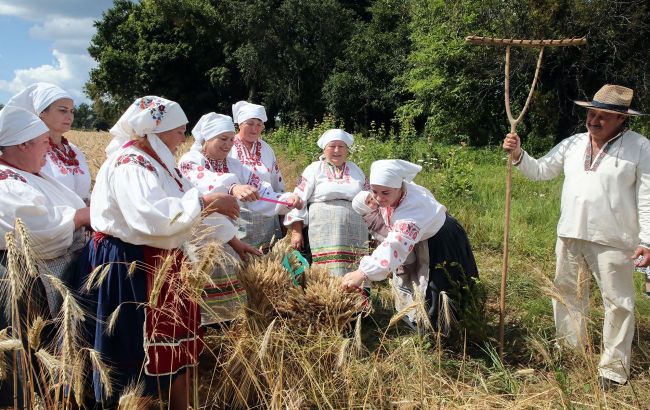How Ukrainians celebrated Obzhynky harvest festival in ancient times
 What is the harvest festival and what traditions of celebration existed in the past (photo: Getty Images)
What is the harvest festival and what traditions of celebration existed in the past (photo: Getty Images)
The harvest in Ukraine ended in late August, and the holiday began in the fields. The harvest festival in Ukraine was not only a time of rest after hard work but also a folk ritual of giving thanks to the land for its yield. Read why a wreath was woven from ears of grain, what the "didukh" symbolized in the home, and how the end of the grain harvest was celebrated.
Holiday born due to work
The harvest festival is the final stage of the harvest, when landowners and the community honor the earth, the harvesters, and the crop. In different regions of Ukraine, the harvest festival could also be called dizhky, dozhynky, or zazhynky (if referring to the start of harvesting). But the essence remained the same: thanks to nature and the joint celebration of work.
 Shocks of wheat sheaves (photo: Wikipedia)
Shocks of wheat sheaves (photo: Wikipedia)
Rituals and symbols
When the last sheaf was cut, it was decorated with ribbons, wildflowers, and often formed into a "didukh", the symbol of the spirit of the field.
This sheaf was placed in a place of honor in the home until Christmas. Often, girls wove a wreath of ears of grain, which symbolized fertility and abundance.

Didukh decorated with blue and yellow ribbons (photo: Wikipedia)
The gathering of the last ears of grain was accompanied by harvest songs in which people praised work and asked for a good harvest in the coming year.
 Harvest wreath (photo: Wikipedia)
Harvest wreath (photo: Wikipedia)
Holiday for whole community
After hard work, people gathered for a feast in the open air or in farmyards. They enjoyed pies, porridge, and uzvar, sang, danced, and formed round dances.
The hostess was the first to bring out bread and salt, as a symbol of prosperity. Sometimes harvest rituals included theatrical performances in which female and male reapers humorously switched roles, recreating the events of the harvest.
Obzhynky as social code
This holiday was not just a ritual but a way of uniting the community. Harvesting was a time of shared hard work, and the harvest festival was a time of shared joy and togetherness. In some villages, the tradition still survives today, as a folklore event or a small festival.
How it is celebrated today
In modern times, harvest festivals are often reconstructed by ethnographic groups or open-air museums, or held in the format of agricultural festivals. Yet the meaning remains unchanged: honoring the work on the land and gratitude for its gifts.
Sources: Institute of Ethnology of the National Academy of Sciences of Ukraine, Encyclopedia of Ukrainian Studies, Museum of Folk Architecture and Life in Lviv, Wikipedia.

